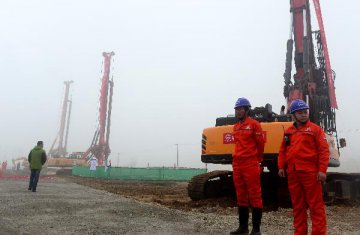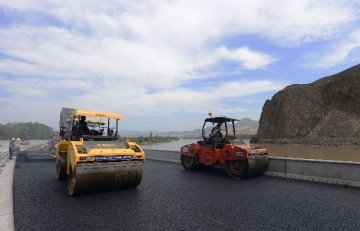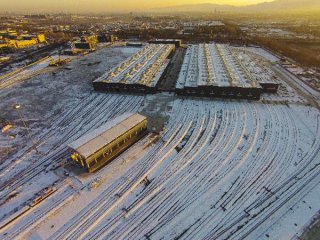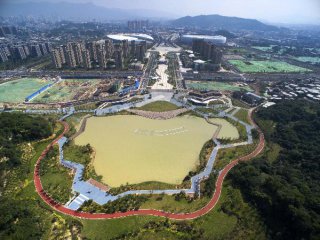
PPP (Public-Private-Partnership) model is widely seen across the country since 2015. Industrial insiders call 2015 as the first year of the PPP model.
PPP model refers to that the government cooperates with social capital to provide infrastructure and public service. Chinese Premier Li Keqiang proposed on July 31, 2013 to involve private capital in the construction and operation of profit-oriented projects through franchise, investment allowance and etc. As a key reform measure for the new round of urbanization construction, this proposal is interpreted as a signal marking the start of PPP model.
Statistics show that more than 1,800 PPP projects, totaling an investment of 3.4 trillion yuan, have been launched around the country at present after two years of development and innovation.
Cooperation between government and enterprises is just like marriage
An industrial expert analyzes that it is agreed by both the theory and the practice of PPP model that the biggest risk of PPP model lies in the government’s “absence of contract spirit” and that “new officers ignore old debt”. Lian Weiliang, vice-chairman of the National Development and Reform Commission (NDRC), also admitted on the press conference held by the State Council Information Office in September that the PPP model was faced with difficulties in implementation.
A team led by Zhu Zhenxin, a researcher with Minsheng Securities, made a research on the implementation of PPP projects. According to their statistics, less than 30 percent of the PPP projects signed contracts, while only half of the signed projects can be implemented this year.
Zhao Fujun, vice-director with the Research Department of Foreign Economic Relations, Development Research Center of the State Council, has been focusing on the study of PPP area for years. In his perspective, the government plays as both the “judge” and the “athlete” in the practice of PPP. It means that the government acts as both the policy marker and an important project participant, playing a vital role in the success of the PPP projects.
“Both the government and enterprises should stick to the idea of equal participation, risk sharing, revenue sharing and win-win cooperation during the PPP cooperation under market environment”. He Yuanping, a founder of Beijing Originwater Technology Co., Ltd. (300070.SZ), compares the relationship among parties involved in the PPP projects to “marriage”.
Attract private capital: a complicated problem
State-owned enterprises (SOEs) have more advantage in aspects including market access, capital financing and etc. than private enterprises. Local governments incline to pay more attentions to the cooperation with SOEs, while they are not so active in the cooperation with private enterprises. It is learnt that even for top 500 private enterprises, only 59 have tried PPP model.
Taking the eldercare sector as an example, Song Xu, investment manager at Powerchina Chengdu Engineering Corporation Limited, who has paid close attention to PPP projects in the eldercare sector, told the reporter that make eldercare PPP project a real thing, it requires to package it and to find in it a proper point that can make profits.
The reporter observed that how to balance investment returns and public benefits, or in other words, how to benefit the public while making social capital earn money when promoting PPP mode in the public service sector is really a test for the government. Despite private enterprises have shown more willingness to participate in PPP in recent years, whether they can get profitable projects and how to maintain sustainable and sound cooperation with local governments still remain as a hard nut to crack.
In addition to project’s profit problem, SOEs’ involvement and influence in the PPP sector is another factor that keeps private capital away from the area.
Zhao also finds through his research that SOEs usually get market assess and capital financing more easily than private enterprises due to various reasons, and that local government attaches more importance to cooperation with SOEs than that with private enterprises when promoting PPP projects.
Weak environment: PPP-related law not put into practice for long
The NDRC first released the Law of Concession for Infrastructure and Public Utilities in last May for soliciting public opinions. Unexpectedly, the final version, after several times of revision, has not been put into practice yet.
Chinese Premier Li Keqiang reiterated during a meeting with experts and entrepreneurs on economic situation held on Nov. 9 that China should expand effective investment, accelerate infrastructure construction, especially the construction of public utilities in the central and western regions and promote balanced development via PPP mode. The premier’s remarks again demonstrate the nation’s resolution to boost PPP.
In Zhao’s view, with few financing channels, private enterprises in China have to spend high costs, usually by pledging assets, to raise fund. The fund is only in a small amount and comes due in a short period. Thus, for PPP projects that demand massive investment and long time, the existing financial system can hardly guarantee the capital demands of most enterprises when participating in PPP projects, hindering the involvement of social capital.
“A large number of local governments still consider PPP merely as a financing means for financing platforms. Efforts are poorly coordinated and working mechanism still has problems,” Zhou Chengyue, inspector at the Finance Department, Ministry of Finance, said in a seminar when speaking of the environment PPP is faced with.
When exploring PPP projects, to improve laws and regulations is also a matter of great urgency. Xue Qitang, director of the Biding and Auction Committee, Beijing Lawyers’ Association, told SSN reporters that many laws in relation to PPP are not clear. The highly-anticipated law on the concession for infrastructure and public utilities has not released. The NDRC and Ministry of Finance respectively issued a set of regulations on PPP, so most enterprises do not know how to participate in PPP projects.
To dream of the fruits of PPP projects is not enough; there must be actions from all parties based on realistic consideration.
Translated by Jennifer Lu and Coral Zhong
























Latest comments